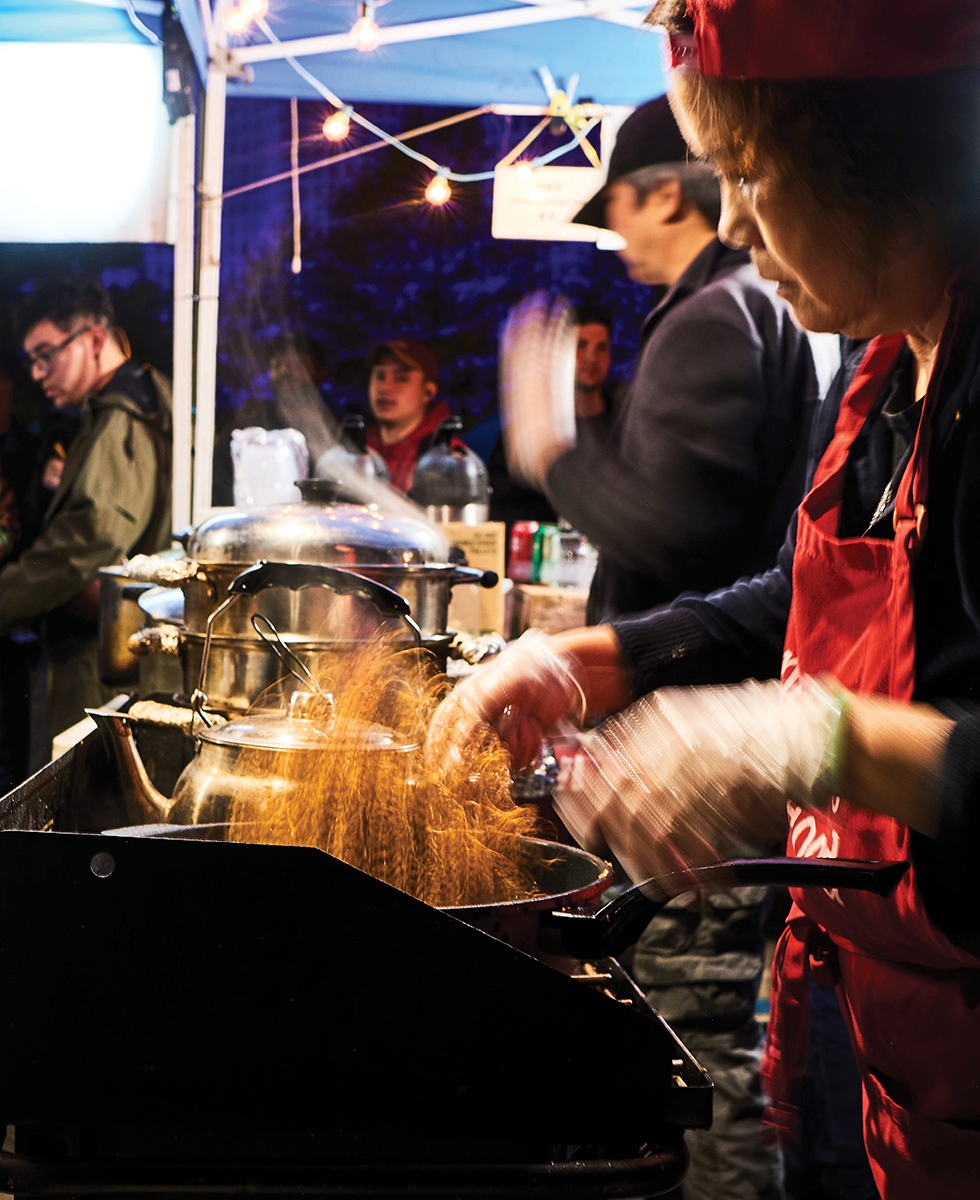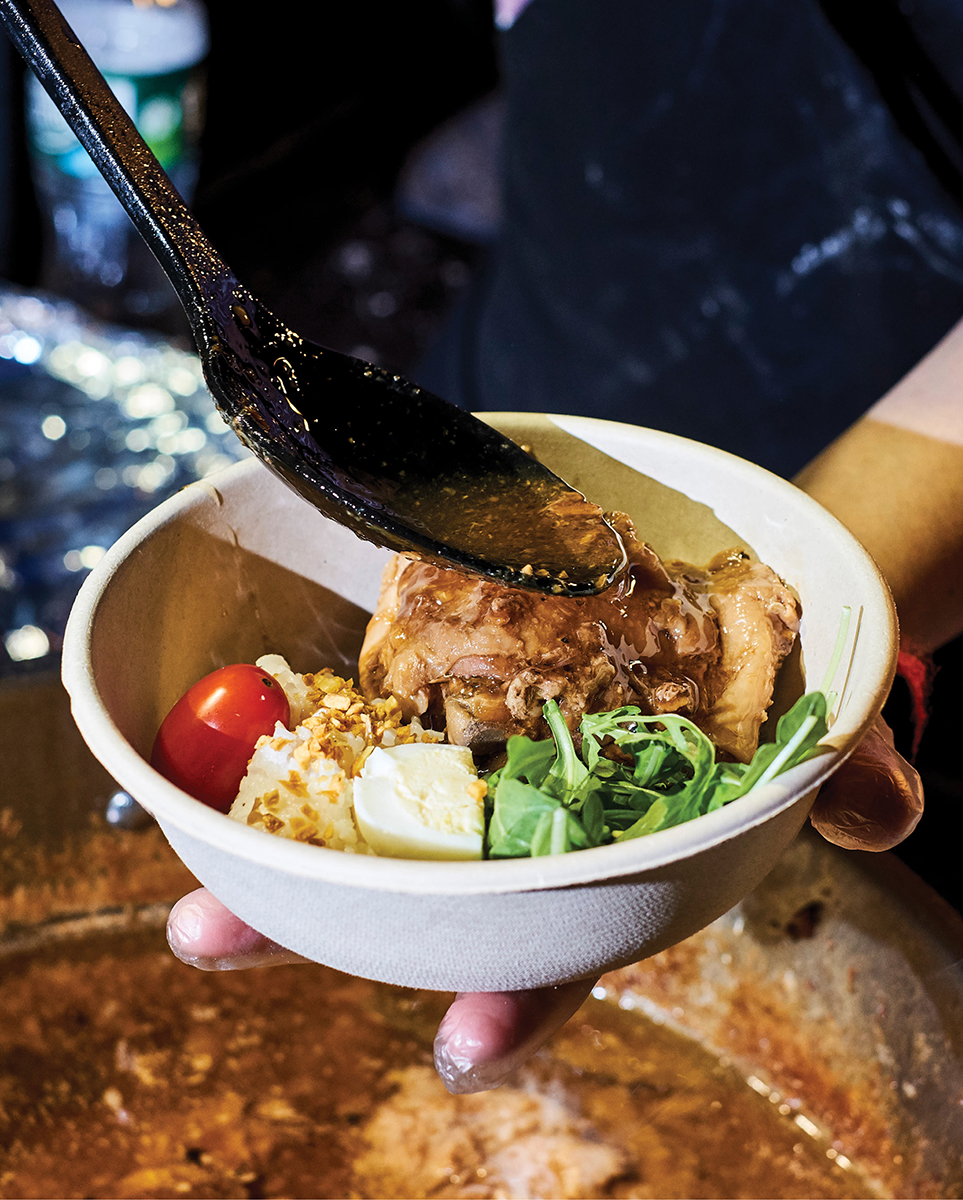
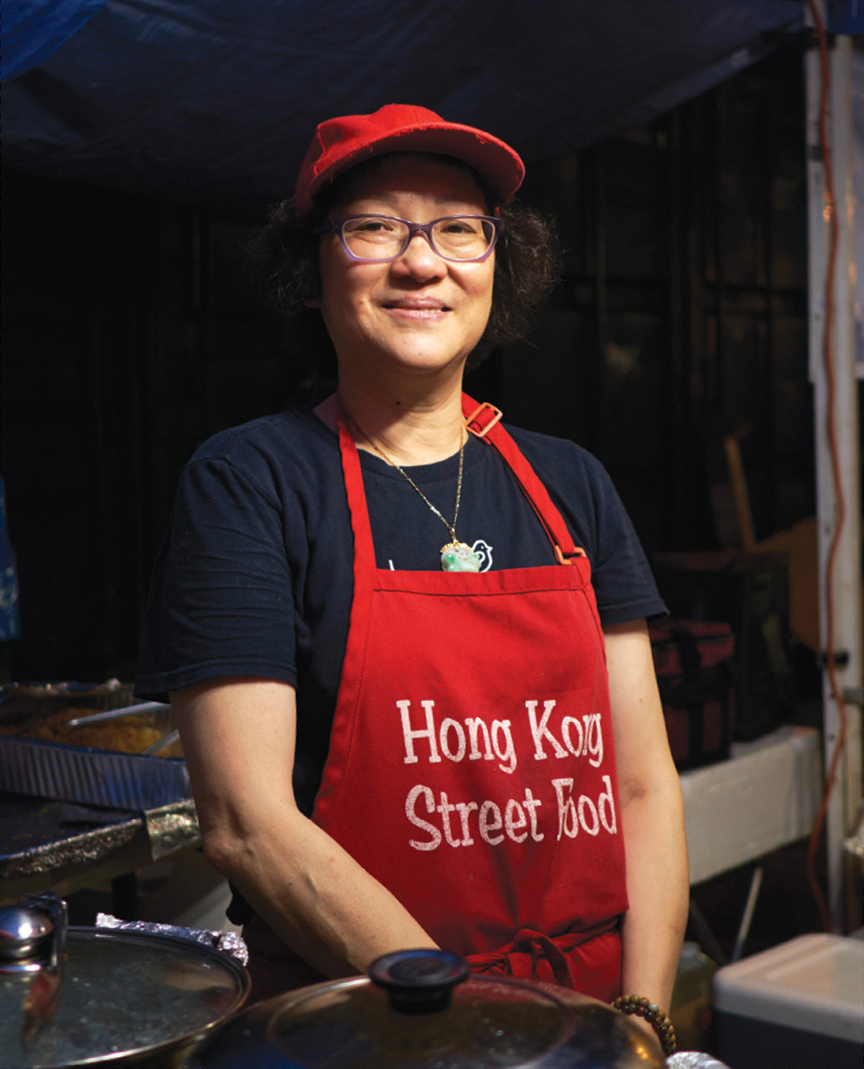
Wanda Chiu
HONG KONG STREET FOOD
41
HONG KONG
Wanda Chiu was raised in the ’60s in Happy Valley, an area of Hong Kong filled with luxury apartment buildings and hotels. Celebrity-spotting was just as popular as watching horse races at the famous racecourse—from their rooftop, since minors weren’t allowed in—and street food was all the rage.
When Wanda was seventeen, her father—fearing the potential spread of Chinese communism into Hong Kong—moved their family to New York City, choosing the “quiet, suburban” area of Flushing, Queens, as their home. Her mother found work in Manhattan’s Chinatown as a seamstress, and brought groceries home from the Chinese stores near work.
There were virtually no Chinese or Hong Kong–style restaurants in Flushing when Wanda’s family arrived. Wanda had only a handful of Chinese classmates, mostly from Taiwan, at her new school. She missed egg waffles, rice-noodle rolls, and the night markets back home—a place where everyone could gather to enjoy midnight snacks after the heat of the day had passed.
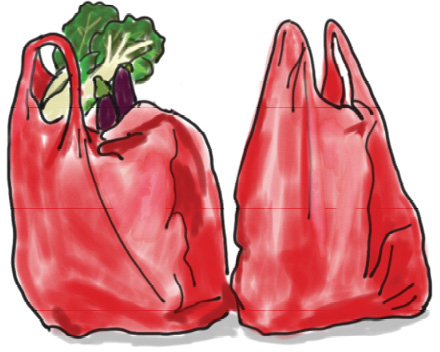
Over the next few decades, she started dabbling in and found a passion for cooking, taking pointers from cookbooks and the internet, hoping one day she’d be able to share the traditional Hong Kong flavors she loves with others. Since starting four years ago, her stand at the Queens Night Market—Hong Kong Street Food—has become a family affair: Her kids, three sisters, brothers-in-law, nephews and nieces, cousins, and friends have all worked at the booth, propelling her stall into popularity.
She didn’t—and still doesn’t—have any plans to commercialize her food. After decades of learning to re-create the memories she holds so dear, she just loves to share her hometown cooking with everyone else. She was a bookkeeper and a housewife, and now she works at an after-school center. And on summer Saturday nights, she sells under a tent with a bright-red label: HONG KONG STREET FOOD.
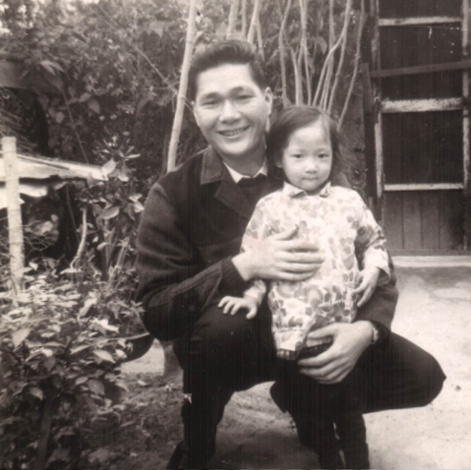
Wanda and her dad at their family farm in Hong Kong in the '60s
SEE YOW WONG CHOW MEEN
Soy Sauce Pan-Fried Noodles
For Wanda, pan-fried noodles evoke memories of breakfast on cold winter mornings before school. You might find these noodles at some Cantonese restaurants in NYC—but according to Wanda, most are disappointing in some way or another: Some don’t have enough soy sauce, others are made too dark with cheap soy sauce, some are too salty, and others are too moist. A proper rendering of this dish requires premium soy sauce (as the Chinese name suggests), and the noodles should be dry and crisp.
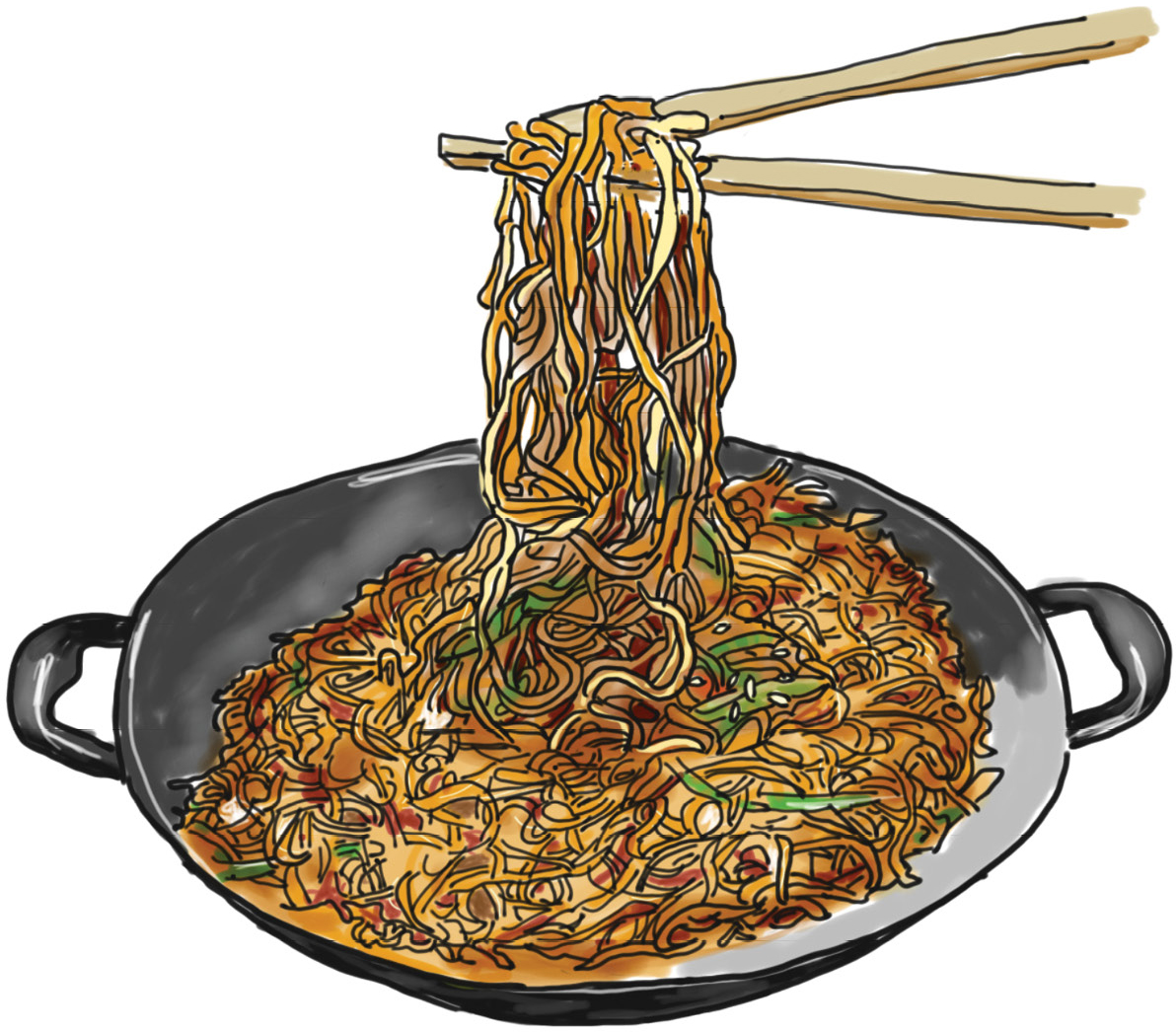
Makes 4 servings
2 tablespoons premium light soy sauce
1 tablespoon premium dark soy sauce
1 teaspoon granulated sugar
1 pound (454 g) thin egg noodles for pan-frying*
1 tablespoon vegetable or canola oil
½ cup (45 g) shredded cabbage
¼ cup (25 g) shredded carrot
¼ cup (60 g) shredded snow peas
½ teaspoon toasted sesame oil
1 teaspoon toasted sesame seeds
1. Mix the soy sauces with the sugar and set aside.
2. Bring a large pot of water to a boil. Add the noodles and stir for 15 seconds. Remove from the heat, drain, and set aside.
3. Heat the vegetable oil in a wok or deep skillet over medium heat. Stir-fry the cabbage, carrot, and snow peas until soft, about 3 to 5 minutes. Add the noodles and stir-fry until they feel dry, about 2 minutes. (The noodles will become lighter and less sticky to toss and stir as they dry.) Add the soy sauce mixture. Stir quickly until the noodles are evenly coated.
4. Drizzle the sesame oil over the noodles, remove from the heat, and transfer immediately to a serving bowl. Garnish with the sesame seeds.
Variation: Street vendors in Hong Kong typically serve the dish without meat, but protein (such as roast pork, beef, chicken, or shrimp) can be added to your liking. These should be prepared in advance and added as the noodles are being stir-fried.
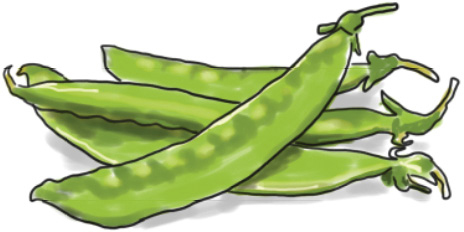
* The noodles can be found in the refrigerated aisle of Asian supermarkets.
CURRY FISH BALLS
Curry fish balls are about as Hong Kongese as burgers are American. For Wanda, curry fish balls remind her of the street vendor outside her school, where she would pick up a tasty snack after a long day of classes. Though they’re simply seasoned fish paste shaped into balls—and fairly ubiquitous in Asian stews and hot pots—they take on new and exciting heights when deep-fried and then dunked into any number of bathing sauces just before eating. A go-to classic, and Wanda’s favorite, is curry sauce.
Makes 10 to 15 skewers
2 tablespoons vegetable or canola oil
2 teaspoons minced garlic
2 teaspoons minced shallot
1 teaspoon minced peeled fresh ginger
2 cups (480 ml) salted chicken broth or water
5 tablespoons Madras curry powder or other yellow curry powder
1 tablespoon light soy sauce
1 teaspoon dark soy sauce
2 teaspoons Asian chili sauce or sriracha
2 teaspoons oyster sauce
1 teaspoon soy paste
1 teaspoon granulated sugar
3 packages fried fish balls (about 18 fish balls per package)*
2 teaspoons cornstarch
1 teaspoon toasted sesame oil
1. Heat the vegetable oil in a Dutch oven or other large heavy pot over medium-high heat. Add the garlic, shallot, and ginger and stir-fry until they become fragrant, about 2 to 3 minutes. Add the chicken broth and curry powder and mix well.
2. Turn the heat up to high and add both soy sauces, the chili sauce, oyster sauce, soy paste, and sugar and bring to a boil. Add the fried fish balls and turn the heat to low to simmer.
3. Dissolve the cornstarch in ¼ cup (60 ml) water and slowly add to the pot while stirring. Simmer until the sauce thickens like gravy or to a consistency you prefer.
4. Drizzle the fish balls with the sesame oil. Each fish ball should be thickly coated with the shimmering curry sauce. Remove from the heat.
5. Thread the fish balls onto bamboo skewers, four or five per skewer. Serve immediately, while hot.

* Fish balls can be found in the refrigerated aisle of Asian supermarkets.
